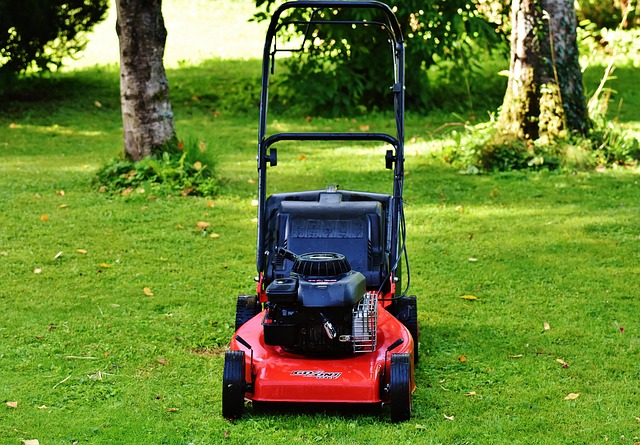Lawn soil compaction in Centennial, especially around high-traffic areas and pipelines, poses significant risks, hindering root development and impairing nutrient circulation. Effective industrial weed control along pipelines is crucial to prevent this issue since weeds contribute to compaction. Regular lawn care, strategic mowing, and innovative methods like vibratory rollers and aerators are employed to maintain open spaces, protect infrastructure, and ensure pipeline efficiency and safety in Centennial.
Lawn plant soil compaction can significantly impact infrastructure, especially pipelines. This compacted soil reduces water and nutrient penetration, hindering pipeline maintenance and causing long-term damage. In response, industrial weed control techniques have emerged as essential tools for managing growth near pipelines. Specifically, focusing on areas around Centennial’s network reveals successful case studies where targeted interventions have relieved compaction, enhancing pipeline health and longevity. Understanding these strategies is crucial for maintaining vital infrastructure in urban settings, especially with effective industrial weed control along pipelines near Centennial.
- Understanding Lawn Soil Compaction and Its Impact on Pipelines
- Industrial Weed Control Techniques for Pipeline Maintenance
- Case Studies: Effective Compaction Relief in Centennial's Pipeline Network
Understanding Lawn Soil Compaction and Its Impact on Pipelines

Lawn soil compaction is a common issue that can significantly impact the health and appearance of your lawn, but it also has notable effects on underground infrastructure like pipelines. Compacted soil restricts water, air, and nutrient movement, hindering root growth and making it difficult for grass to thrive. This problem is especially pronounced in areas with high foot traffic or heavy machinery operations near pipelines in Centennial.
When left unaddressed, compacted soil can lead to reduced pipeline efficiency as the soil pressure affects the flow of fluids. Moreover, it can cause damage to the pipelines themselves, creating vulnerabilities that may require costly repairs or replacement. Implementing effective industrial weed control measures along these pipelines is crucial, as weeds can contribute to compaction by competing for nutrients and space. Regular maintenance and proper lawn care practices are essential to mitigate soil compaction and ensure the longevity of both your lawn and Centennial’s underground infrastructure.
Industrial Weed Control Techniques for Pipeline Maintenance

Maintaining clear and open spaces along pipelines is essential for ensuring efficient operation and safety in the Centennial area. Industrial weed control techniques play a crucial role in achieving this goal, especially when dealing with stubborn and invasive plants that can compact soil and damage infrastructure. Companies specializing in industrial weed control along pipelines employ advanced methods to tackle these challenges effectively.
One common approach involves the use of specialized equipment, such as herbicides applied through high-pressure sprayers or thermal weeding machines. These tools are designed to eliminate weeds at their root, preventing regrowth and reducing the need for frequent treatments. Additionally, professionals may employ strategic mowing patterns and regular maintenance checks to disrupt weed growth and protect pipeline corridors from soil compaction relief.
Case Studies: Effective Compaction Relief in Centennial's Pipeline Network

In recent years, Centennial’s pipeline network has served as a fascinating case study for evaluating effective compaction relief methods. The region’s dense vegetation and frequent foot traffic posed significant challenges, leading to soil compaction that threatened the integrity of the pipelines. To address this, professionals implemented innovative strategies focusing on both physical and chemical solutions.
One notable approach involved employing industrial weed control techniques along the pipeline corridors near Centennial. By targeting invasive plant species with targeted herbicides, they reduced competition for nutrients and water, allowing grass and native plants to thrive. This not only restored the soil structure but also created a buffer zone that minimized foot traffic impact. Additionally, mechanical compaction relief methods, such as vibratory rollers and aerators, were utilized to break up dense soil, enhancing water infiltration and promoting healthier root development.
The article has explored the critical issue of lawn soil compaction and its detrimental effects on pipeline integrity, particularly in urban areas like Centennial. By understanding the causes and impacts, we’ve illuminated effective strategies such as industrial-scale weed control techniques to mitigate these issues. The case studies from Centennial’s pipeline network demonstrate the successful application of targeted solutions, emphasizing the importance of proactive maintenance for long-term infrastructure health. For communities surrounding pipelines, adopting these practices can significantly reduce soil compaction, ensuring a safer and more sustainable environment for both utilities and residents alike, specifically focusing on industrial weed control along pipelines near Centennial.
